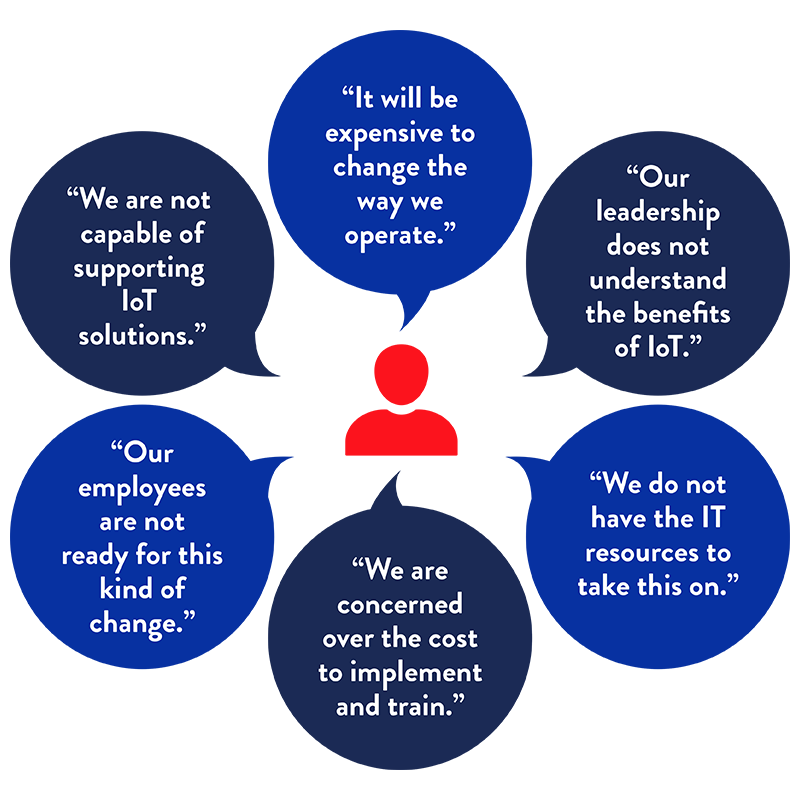4 Ways to Avoid Common Mistakes When Deploying Fleet Management
By James Rose

I partner with many organizations to conduct proof of concept (POC) reviews to determine if an idea is feasible from a technology standpoint. And I have learned that a successful POC does not always lead to a successful fleet management deployment. In fact, sometimes a solution might not deploy at all. Why not?
It isn’t the business case.
Management is usually convinced a solution will improve safety, lower costs or provide more insightful data. That has already been determined.
And it isn’t the POC in most cases, either.
The trial is completed, the devices perform as expected, the data is collected and proven — everything works as planned. So why not move forward?
The problem is almost never the technology itself.
Your goal must be focused on bridging the POC to a proof of value (POV), which takes a deeper dive into the value of your fleet management solution so you can justify adoption and measure success.
4 Tips to Deploy a Fleet Management Solution
1. Visualize the Critical Elements
Gather enough data after deployment to prove conceptualized value. This discussion extends beyond the use case and the value you assigned to it. The vision of the operational transformation must be well understood. Organizations should be able to visualize their new operational reality day to day, week to week and month to month.
To bridge POC and POV, organizations must be able to visualize multiple critical elements:
- What resources are needed to deploy?
- Who will focus on the newly available data?
- How will we train our employees?
- Is the IT and security infrastructure prepared to support deployment?
- How can this new technology be a value-add to our organization’s culture?

2. Choose the Right Partner for Implementing Technology
Sometimes a service provider’s implementation plan is only to ship the hardware, provide data and set up a single virtual training session. That’s why it is critical to understand the service provider’s local support model, how they will work with you to integrate / operationalize the fleet management technology, and what other resources they can make available to you (engineering support, architecture and hardware support, etc.).
Keys to successful implementations:
- Insist on implementation plans from vendors and involve them in implementation planning early in the process.
- Discuss post-implementation support early.
- Ensure executive sponsorship and buy-in from stakeholders.
- Plan to succeed — understand how you will scale your solution, and how it relates to / integrates with future deployments.
You should also have your provider’s post-sale support offerings in writing. When you document new processes, this level of support should be a part of your new methods and procedures.
3. Gain Support from Leadership
Don’t wait until you’ve had a successful test run to ask your senior leadership for permission to move forward with your fleet management implementation. Executive sponsorship, or at least awareness, should be gained early.
And identify all your stakeholders — there are likely people within your organization who can’t approve anything, but who could make moving forward difficult for you if their concerns aren’t heard. And they are probably worth hearing.
Almost three-quarters of business and IT decision-makers view strategy and planning as the phase most critical to a project’s success. Most companies with successful IoT initiatives involve partners and vendors early in the strategic planning phase.
Cisco, 2017
4. Start with the Assumption That You Will Be Successful
Consider what other capabilities this unlocks for you. When you monitor your fleet, does this make it easier for you to monitor non-fleet assets as well? If you deploy rugged tablets in vehicles for location-based services, can you also more easily execute dispatching, job assignment and work orders?
2 Barriers to Adoption
Consider these caveats when using IoT technology to implement a fleet management plan.
- The cost and complexity of deployment. Consider the number of people needed and the skill sets needed to install and configure a solution.
- The total cost of ownership. Design the solution to keep technology fresh and perform updates. Centralized management of updates and policies is critical to deploy at scale.
Dave Lafferty, President, Scientific Technical Services





